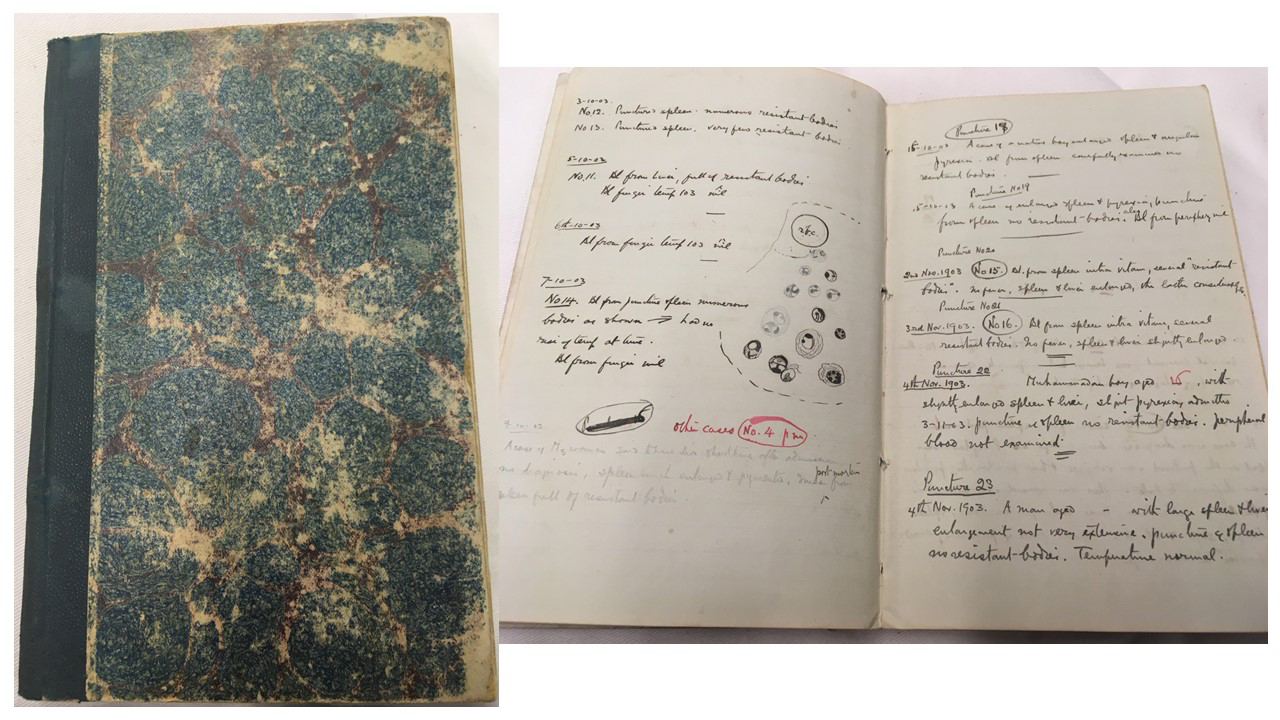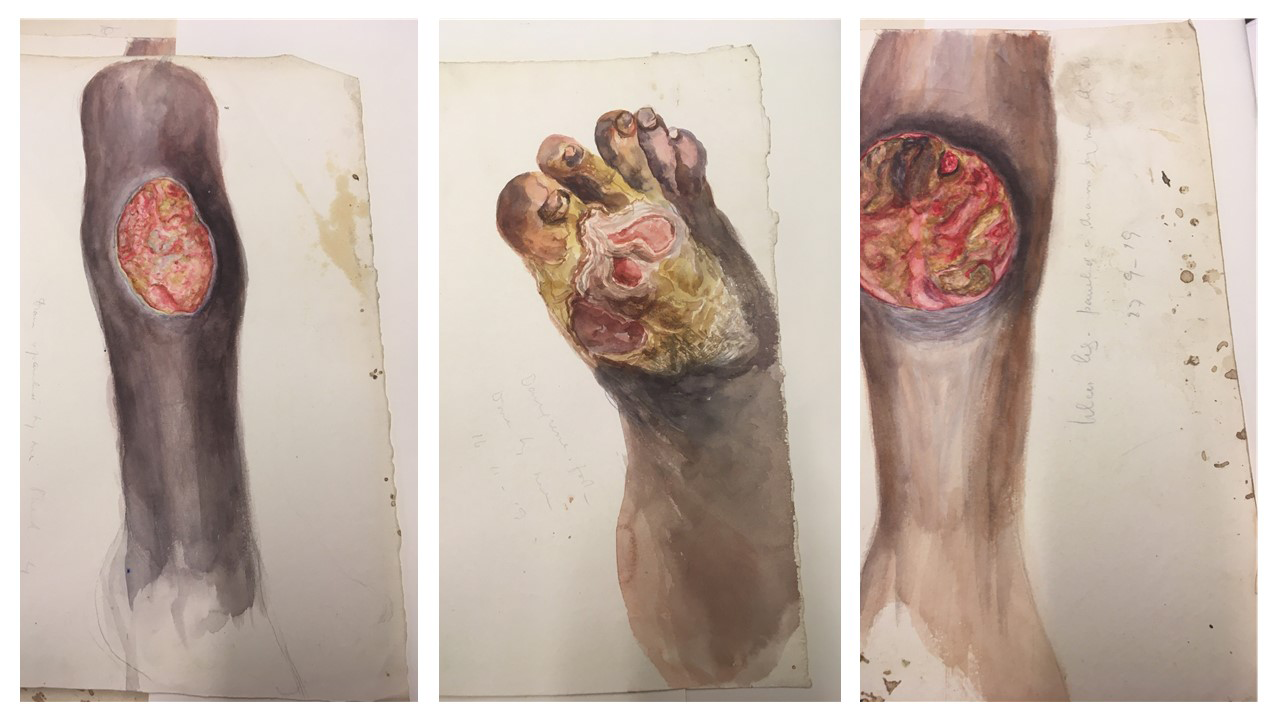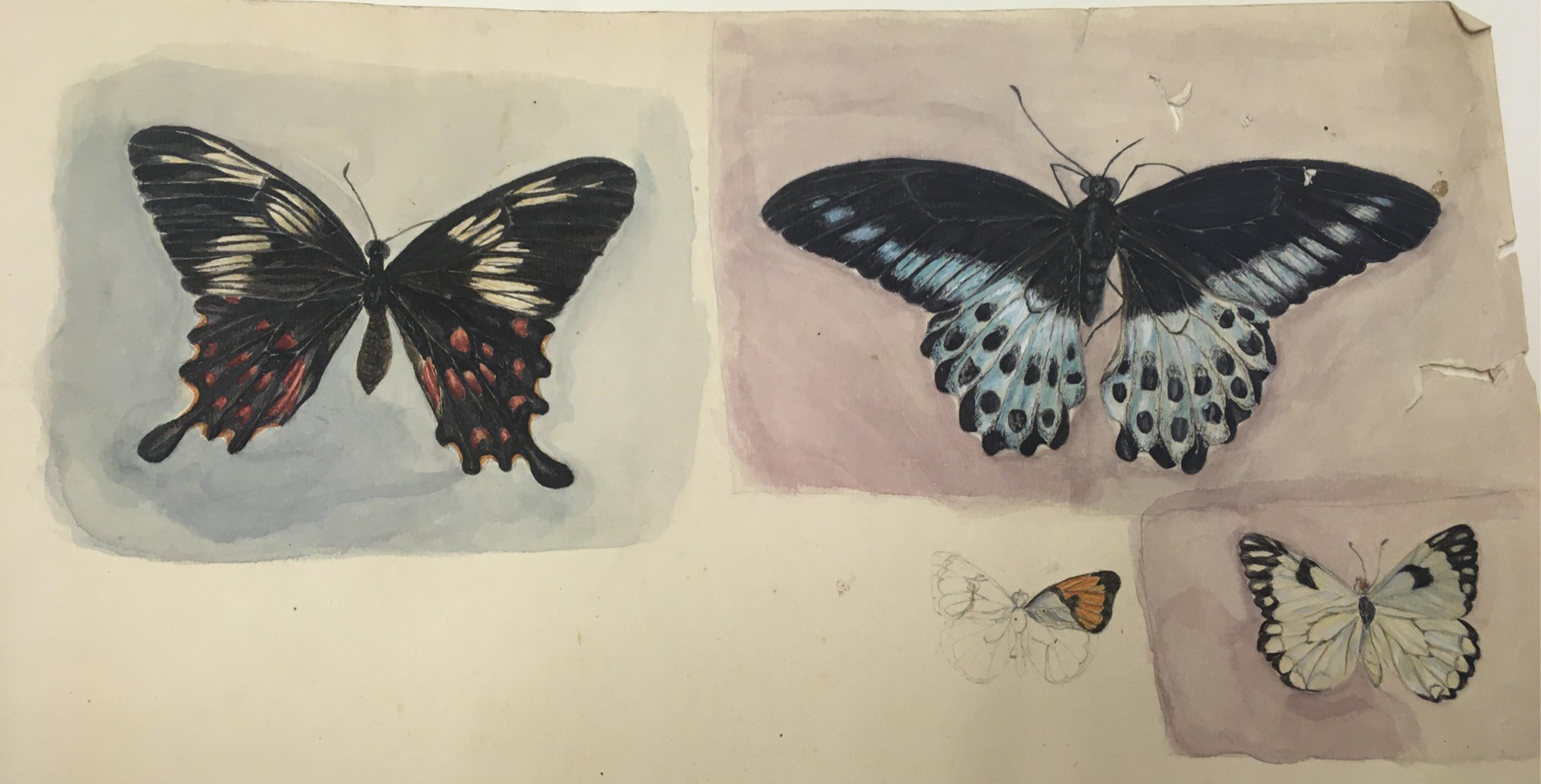Translate this page into:
From Cork to India to Liverpool: Colonel Charles Donovan (1863–1951)
Corresponding author: Dr. Cathal O’Connor, Department of Paediatrics and Child Health, School of Medicine, College of Medicine and Health, Cork University Hospital, University College Cork (CUH); INFANT Research Centre, University College Cork; Department of Dermatology, South Infirmary Victoria University Hospital Ltd., Cork, SIVUH. cathal.oconnor@ucc.ie
-
Received: ,
Accepted: ,
How to cite this article: O’Connor C. From Cork to India to Liverpool: Colonel Charles Donovan (1863–1951). Indian J Dermatol Venereol Leprol 2023;89:630–3.
Colonel Charles DonovanColonel Charles Donovan [Figure 1A–1C] was an inspirational Irish doctor, who attended University College Cork in Ireland, fostered international collaboration in researching infectious diseases, unravelled the mystery of leishmaniasis in India, and left an indelible mark on global medicine.

- Images of Charles Donovan from Wellcome collection, a portrait hanging at the Royapettah Hospital, and the Indian Medical Service
Donovan was born in Calcutta, in the Bengal region of India in 1863.1 His parents were from Cork; his father was Judge Charles Donovan, and his mother was Grace Jennings French. He was the eldest of nine children and was educated in Dehradun and Mussoorie until he was 13. In 1879, he was sent to West Cork to live with his paternal grandfather, Reverend Charles Donovan. He completed his secondary education before entering the university in Cork. His grandfather’s house was the glebe house in Ballinadee, County Cork. This is listed by the National Inventory of Architectural Heritage2 and is closely related to the Church of Ireland church and graveyard to the east. Donovan’s ancestors are also buried in a family plot in Ballinadee.3
Donovan registered as an art student in what was known as Queen’s University College Cork in 1880 at the age of 17.4 At the time, the arts programme would have included subjects relevant to the study of medicine. He was also registered in the university for 1882 but then moved to Trinity College, Dublin to complete his degree. Donovan then registered at Queen’s University College Cork in 1885 to start his medical degree. He was granted his degree from the Royal University of Ireland in 1889 and then worked in Dublin hospitals for two years before returning to India.
In the late 19th century, the Indian Medical Service was a popular career choice with young Irish doctors, especially for those with a special interest in tropical diseases. In 1891, Donovan was commissioned as a Captain and was posted to Fort Dufferin in Mandalay, which was then in Burma [Figure 2].5 Around 4 years later, he was posted back to Mangalore. In 1897, he joined the Gordon Highlanders Tirah expedition to Afghanistan. After 2 years on this expedition, he was awarded the Indian Frontier Medal with two clasps. In 1898, Donovan accepted a professorship of physiology at Madras Medical College and also became a physician in the Government General Hospital.1 In 1910, he became superintendent of the Government Royapettah Hospital.

- Excerpt from the Indian Medical Service roll, summarising Donovan’s career, with his education in Cork, training in Dublin, and subsequent work in the medical service
Donovan had a special interest in kala-azar, which means black fever in Hindi.6 Kala-azar was an epidemic in Eastern India at the turn of the 19th century, with a 30% mortality rate for the visceral disease. It is characterised by intermittent fever, cutaneous pigmentation and ulceration, anaemia, weight loss and splenomegaly.
At the end of the 19th century, several doctors reported the finding of parasites in various tissue samples without making the link with kala-azar. In 1900, Scottish pathologist Will Leishman discovered ovoid bodies in smears taken post-mortem from the spleen of a soldier who died from emaciation and splenomegaly while stationed at Dum Dum near Calcutta. On 30th May 1903, he reported his findings in the British Medical Journal, assuming that the bodies seen represented degenerated trypanosomes.7 Independently, in Madras, Donovan had documented the presence of small oval intra-cellular bodies in spleen samples at separate post-mortems on the 22nd and 24th of April. On 17th June, Donovan identified these bodies as the causative agent of kala-azar after taking a splenic sample from a 12-year-old boy with classic symptoms. He published on the causative association between the bodies and kala-azar on 11th July in the British Medical Journal.8
Several primary sources of Donovan’s work are available at the Wellcome Library in London, including his personal notebook from his time in India [Figures 3A–3B]. From his personal diary, an entry from 18th June states: “yesterday (17th June) I had the occasion to puncture intra vitam the spleen of a native boy, aged 12 years, suffering from irregular pyrexia … and found identical bodies in the blood from the spleen, thus removing any doubt there was as to the products being due to post-mortem changes … There was nothing resembling Trypanosomata in the peripheral blood of the boy in question.” He concluded that the bodies represented a novel protozoan organism responsible for kala-azar. He was a wonderful artist and drew very detailed clinical drawings of the cutaneous ulceration of his patients with kala-azar [Figure 4A–4C].

- Donovan’s personal notebook from his time in India, showing examples of his careful note-taking, with dates of each entry, and diagrams of the microscopic findings

- Examples of Donovan’s detailed anatomic drawings of the cutaneous ulceration associated with kala-azar from his personal notebooks
To confirm his hypothesis, Donovan appealed for splenic samples from patients suffering from kala-azar. He then sent slides to both Charles Laveran at the Pasteur Institute in Paris and Ronald Ross at the University of Liverpool. Charles Laveran felt that the bodies represented a new species of the genus Piroplasma, which he denoted Piroplasma donovani.9 Ronald Ross disagreed and felt that the bodies were a new genus. He proposed the name Leishmania donovani to honour both Leishman and Donovan.10,11 Unfortunately, Leishman objected to share the accolade with Donovan and unsuccessfully battled, with the support of the Royal Army Medical Corps, to have Donovan’s contribution expunged from the name.12
In addition, Donovan identified the causative organism for ‘granumloma inguinale’ from crushed impression smears taken from ulcerating oral lesions of a boy working in the hospital.13 The organism has now been reclassified as a form of Klebsiella, and the disease is known as donovanosis, and the organisms are known as Donovan bodies on microscopy. This condition became common in 1950’s Britain due to immigration from the Indian subcontinent.
Donovan’s colleagues in India admired and adored him.14 They said he had a perfect bedside manner, was hard-working, motivational, an excellent team leader, and was generous, for example, setting up a sporting organisation with his own money. However, he could be blunt and outspoken, which made him some enemies.
Donovan has been commemorated in most of the hospitals in which he worked. The Havelock ward in Chennai was renamed the Donovan ward, and a special plaque was unveiled on the golden jubilee of his discovery. There is also a portrait of him hanging in the Madras medical college hall, as well as in the Government Royapettah hospital.
One of his colleagues, Captain Krishnaswami, said in his memoirs,12 “…with a cheerful smiling face and kindly expression, large-hearted and generous”. He used to drive into the hospital in a brougham and after a few minutes in the office, came punctually into the Havelock ward at 7.20 am, where he stayed for about 3 hours, after which he went around the other wards till 11.30 am. He was throughout talking to patients or students. His bedside manners were perfect, and the patients felt considerably better and encouraged when he moved systematically from one bed to another. Had it not been for the bitterness caused by the question of priority of discovery, and a lack of proper appreciation of his talents and works by the colleagues and authorities in Madras, Donovan would probably continue and extend his researches with unabated vigour for many more years.
In 1919, burnt out by the politics and tension related to his medical work in India, he retired to Gloucester in England.15 He frequently visited his family in West Cork. In retirement, he developed a keen interest in moths and butterflies [Figure 5] and went on to discover the existence of several rare moths in Cork and Kerry, and wrote a book called the Catalogue of the Lepidoptera of Ireland in 1936.

- Examples of Donovan’s drawings of butterflies from his personal notebooks
His wife Mary was a descendant of Sir Christopher Wren, who designed St Paul’s Cathedral in London, and she died in 1940.16 Donovan, and his wife were, in fact, cousins. They had two daughters (Helen and Amy) and one son (Reagh). None of his children had children of their own, and Reagh suffered from retinitis pigmentosa, likely related to consanguinity. Reagh became reclusive following his diagnosis and spent many years in the arctic. Helen became a famous archaeologist and was awarded a Member of the Order of the British Empire. Donovan died in 1951 in Bourton-on-water, at the age of 88 and was buried locally.
As a former student who went on to receive international recognition for describing two diseases exhibiting cutaneous manifestations (Figures 6a and b), Donovan was commemorated in the University College, Cork with the Charles Donovan Medal in Dermatology.17 This is awarded to the highest-scoring candidate in undergraduate dermatology at University College, Cork.

-
Leishmania donovani in a bone marrow cell

- Donovan bodies, encapsulated Gram-negative rods, representing the bacterium Klebsiella granulomatis, in a white blood cell from tissue extracted from an inguinal lesion.
In a speech delivered at the Liverpool Medical History Society in May 1999,18 Dr. Tharakaram said that “Charles Donovan’s footprints on the shores of India and on the sands of time will remain to inspire all future generations in the medical profession.”
Donovan’s discovery would never have been appreciated without the help and support of Ronald Ross at the University of Liverpool School of Tropical Medicine, changing the paradigm of infectious diseases and acting as a mediator between two sparring clinicians. The story of kala-azar highlights the importance of international collaboration in the research of infectious diseases, which we have seen to great effect in the last two years of the Covid-19 pandemic.
Acknowledgement
I would like to thank Harriett Whitlock for her help in identifying sources from the Royal College of Physicians of Ireland library and also for directing me towards other primary sources for this research; Timmy O’Connor from the University College, Cork Archives who helped me to find the sources of Donovan’s university registration; and the Wellcome Library in London for their support in my research.
Declaration of Patient consent
Patient’s consent not required as there are no patients in this study.
Financial support and sponsorship
Nil.
Conflict of interest
There are no conflicts of interest.
References
- https://web.archive.org/web/20140201173718/http://www.evolve360.co.uk/Data/10/Docs/11/11Tharakaram.pdf (accessed January 5th 2023)
- https://www.buildingsofireland.ie/buildings-search/building/20911121/the-glebe-house-ballinadee-county-cork (accessed January 5th 2023)
- https://historicgraves.com/christ-church-graveyard/co-ctch-0120/grave (accessed January 5th 2023)
- Admission Register, Queen’s University College, Cork (now University College Cork)
- Indian Medical Service Roll. Royal College of Physicians of Ireland
- On the possibility of the occurrence of trypanosomiasis in India. Br Med J. 1903;1:1252.
- [CrossRef] [Google Scholar]
- On the possibility of the occurrence of trypanosomiasis in India. Br Med J. 1903;2:79.
- [Google Scholar]
- Note on the bodies recently described by Leishman and Donovan. Br Med J. 1903;2:1261-2.
- [CrossRef] [PubMed] [Google Scholar]
- Jha prize essay: Microbe under microscope: Charles Donovan on “leishmania donovani”. Proc Indian Hist Cong. 2003;64:1164-76.
- [Google Scholar]
- Cases from Madras General Hospital. Ulcerating granuloma of the pudenda. Ind Med Gaz. 1905;40:411-4.
- [Google Scholar]
- Br Med J. 1951;2:1286.
- https://madrasmusings.com/Vol%2020%20No%2018/donovan-of-mmc.html (accessed January 5th 2023)
- https://www.ucc.ie/en/scholarships/undergrad/comhugtable/comhugcdpd/ (accessed January 5th 2023)
- Indian Medical Service. Paper delivered to the Liverpool Medical History Society May 6 1999
- [Google Scholar]





